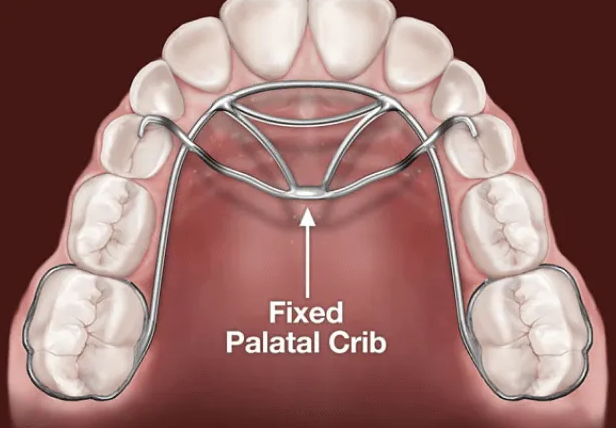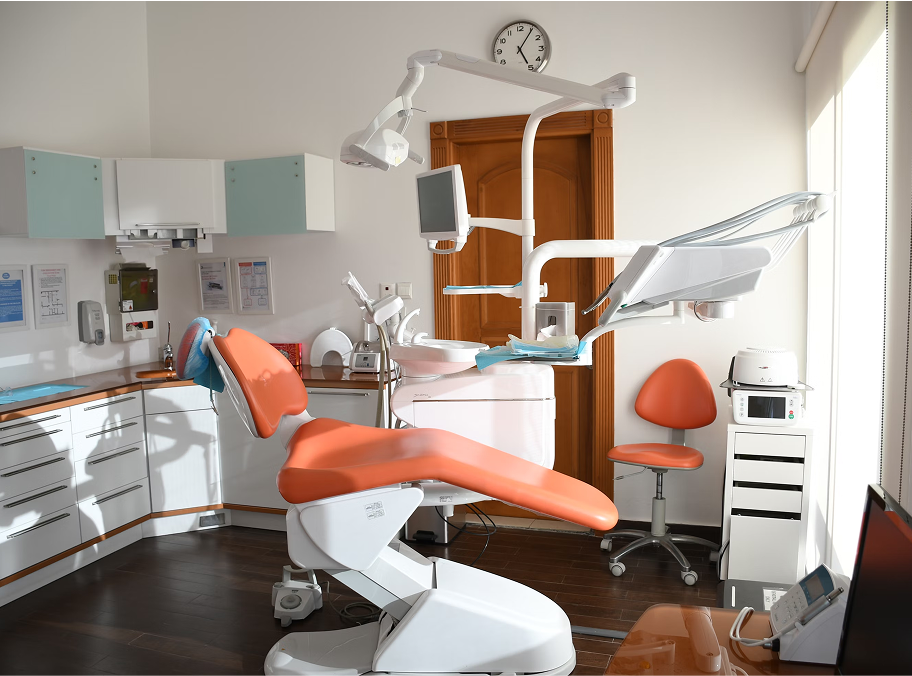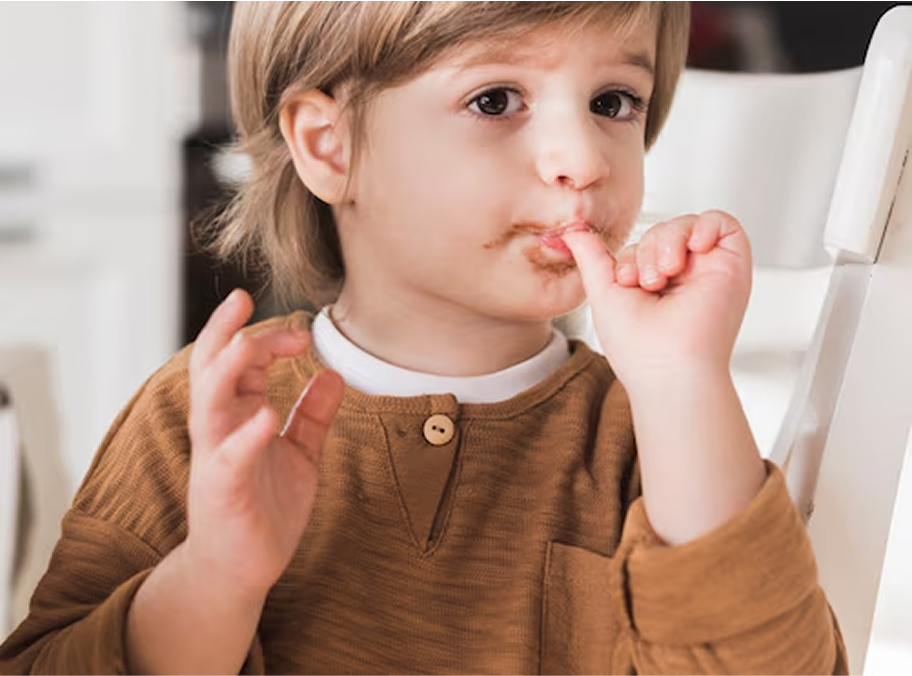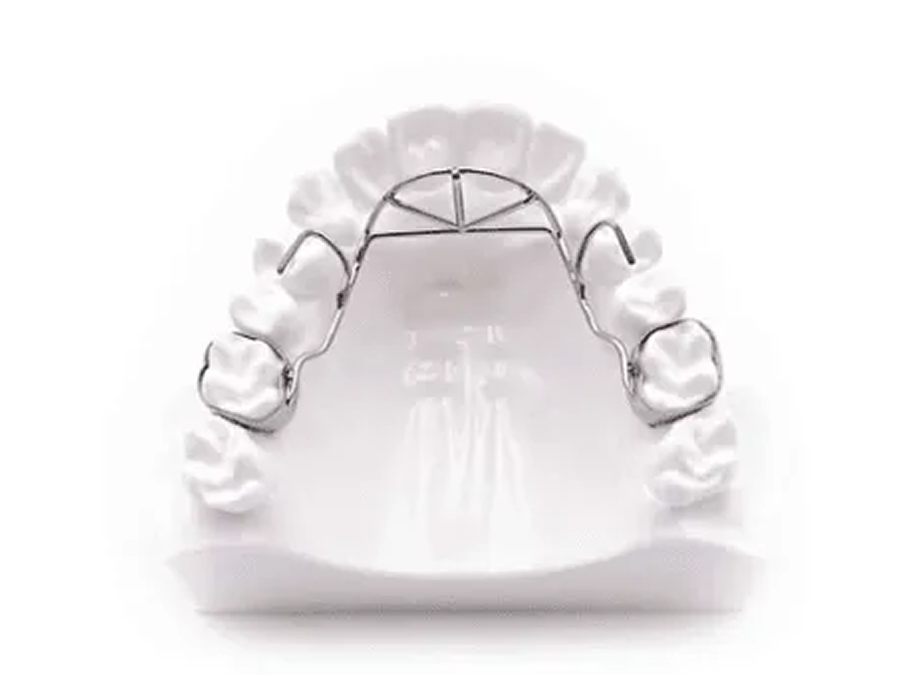Habit Appliances for Children.
At Atlanta Orthodontic Specialists, we’ve helped countless Atlanta children overcome bad habits such as thumb-sucking and tongue-thrusting in the past 45 years. Now, we’re helping their children do the same, for generations of happy patients and beautiful smiles!


How Does a Habit Appliance Work?
A habit appliance is a painless and drama-free way to finally rid your child of behaviors that can adversely affect their oral development—such as thumb sucking and tongue thrusting. Though these behaviors are common in very young children, if they continue past the first few years of life, they can cause an improper bite.
The habit appliance—chosen specifically to address your child’s unique situation, age and growth—will be temporarily secured into your child’s mouth and affixed to their teeth so it doesn’t come out and get lost. It does not change the shape of your child’s mouth or teeth. The habit appliance’s job is to make the act of tongue thrusting or thumb sucking slightly uncomfortable and more difficult, which subtly discourages your child from continuing with the behavior.
How Thumb-sucking Affects Your Child’s Growing Mouth.
Thumb sucking and pacifier use can affect your child’s bite and palate if continued too long. Most kids stop using pacifiers by age 1 and thumb-sucking by age 2–4. If it continues, it can lead to unwanted changes in mouth and jaw development. But for children who use pacifiers or suck their thumbs later into their formative years, that additional pressure and repeated action can cause several unwanted changes to the skeletal growth of the mouth, potentially causing:
- Crowded teeth
- Overbite
- Underbite
- Crooked teeth
- Gapped teeth


How Tongue Thrusting Can Affect a Child’s Mouth.
Tongue thrusting is when a child pushes their tongue through the spaces between their front teeth while speaking, swallowing and sometimes even at rest. Tongue thrusting is common in babies who are breast- or bottle-feeding, and they usually outgrow it naturally as they learn to swallow more effectively.
For some children, the habit continues longer, putting continuous, repeated pressure on the growing mouth that can lead to:
- Open bite
- Protruding front teeth
- Speech issues
- Breathing and sleep disturbances
Frequently Asked Questions.
Can Lids Eat Food with a Habit Appliance?
Orthodontic habit appliances are affixed to your child’s mouth and are only removable by your orthodontist. Your children will continue to eat and drink normally, without interference from their habit appliance.
What Age is a Habit Appliance For?
Habit appliances are best for children who maintain habits like thumb-sucking or tongue-thrusting past the age of 4 or 5. However, parents of children as young as 2 and 3 may have concerns about these habits, so it’s best to talk to an Orthodontist early to get an expert opinion.
What are the Benefits of a Habit Appliance?
By breaking the intended habit, habit appliances will save parents and children pain, money, and hassle down the road. Many orthodontic issues can be caused by thumb-sucking and tongue-thrusting, so breaking the habit earlier rather than later is advised. Furthermore, habit appliances have a major edge over other methods of habit-breaking, because they’re far more effective, yet subtle and drama-free (no stress, no tears!).
Does a Habit Appliance Require Special Care or Maintenance?
A habit appliance is, for the most part, very low maintenance. For the first few days, speech may be affected, and if your child has any discomfort, your orthodontist can recommend ways to alleviate it, like applying wax to the appliance or using a saltwater rinse.
While the habit appliance is in, your child should avoid sticky or hard foods that could damage the appliance. You’ll also want to make sure you’re helping your child brush around the appliance each day to avoid food or plaque buildup.
Get Your Free Consultation.
Start the journey toward a straighter smile today!